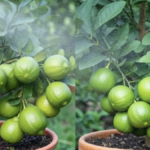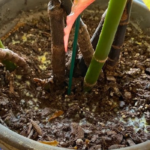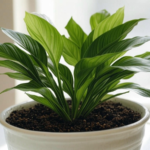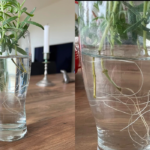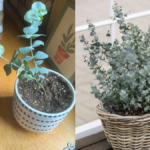As a long-time plant grower, here’s How I Water Indoor Plants Properly in 2025. Learn simple, effective tips based on real-life experience to keep your houseplants thriving.
Watering indoor plants isn’t one-size-fits-all. In this 2025 guide, I share my personal routine and expert tips to help your plants grow healthier and happier
Table of Contents
How I Water Indoor Plants Properly in 2025
After caring for indoor plants for many years, one thing I’ve realized is this: watering is both an art and a science. Overwatering and underwatering are still the most common mistakes, even in 2025. I’ve seen beginners give too much love (and water), and I’ve done it myself in the early days.
In this post, I’ll share how I water my indoor plants today, what’s worked for me, and how you can avoid the mistakes I made when I started.
1. Every Plant Has Its Own Rhythm
One thing I’ve learned: don’t treat all plants the same. Over time, I’ve gotten to know each plant’s needs just by looking at them.
- Succulents and cacti – I only water them every 2 to 3 weeks, and only if the soil is bone dry.
- Tropical plants like Monsteras or ZZ plants – I wait until the top inch or two of soil is dry.
- Ferns and Calatheas – These love humidity, so I keep the soil slightly moist, but never soggy.
Tip from me: Stick your finger in the soil. It’s simple, but it works better than any gadget in most cases.
2. I Prefer Bottom Watering for Most Plants
After trying many methods, I found that bottom watering is the safest, especially for pots with proper drainage.
Here’s how I do it:
- I place the pot in a shallow dish of water.
- Let it soak for 20–30 minutes.
- Remove the pot and let any excess drain out.
This keeps the roots healthy and avoids wetting the leaves, which can attract fungus.
3. What Kind of Water I Use Now
Over the years, I’ve learned that water quality matters more than people think.
- For regular plants, I use tap water that’s been left out overnight.
- For sensitive plants (like Calatheas or Peace Lilies), I use filtered or rainwater when I can.
Avoid softened water—it’s hard on roots due to the salt.
4. Signs I Watch for Before Watering
Experience taught me that the plant speaks before it suffers. Here’s what I look for:
Overwatering signs:
- Yellowing or drooping leaves
- Mushy stems
- A musty smell from the soil
Underwatering signs:
- Dry, crispy leaves
- Leaves curling inward
- Soil pulling away from the pot edges
My advice: Don’t water on a schedule—water based on what the plant and soil tell you.
5. Seasonal Watering Adjustments I Make
In summer, I water more often—plants grow faster and need more moisture.
In winter, I cut back—growth slows, and overwatering can kill roots.
I also move my plants around with the seasons to give them the right light and warmth, which affects how much they drink.
6. The Importance of Good Drainage – A Must for Every Indoor Plant
One mistake I used to make years ago was keeping plants in pots without drainage holes. Trust me, it never ends well.
Always use pots with drainage holes.
Use well-draining soil mixes – I often mix perlite or pumice with regular potting soil.
I place a layer of small pebbles or broken clay pieces at the bottom to improve water flow.
7. Humidity Matters More Than You Think
Some plants don’t just need water in the soil—they need moisture in the air too.
I keep a humidifier running in winter when indoor air gets dry.
For ferns, Calatheas, and prayer plants, I group them together to create a micro-humid environment.
I occasionally mist them—but carefully, only when it won’t lead to fungus.
FAQ Section (based on what people ask me):
How do I know when to water my indoor plants?
I check the soil with my finger. If it’s dry 1–2 inches down, it’s time. Moist? I wait a few more days.
Is bottom watering better than top watering?
For most of my plants, yes. It helps roots get water evenly and avoids wet leaves.
Can I use tap water?
Yes, just let it sit overnight. For fussy plants, use filtered or rainwater.
Final Thoughts: Listen to Your Plants
If there’s one lesson I’ve learned over the years, it’s this: each plant is different, and they’ll tell you what they need if you pay attention.
You don’t need fancy tools. Just experience, patience, and observation. And in 2025, with all the plant tech and tips out there, nothing beats what you learn by caring for your plants with your own hands.
Read More Post
How to Take Care of Plants in Summer: My Expert Tips from Years of Farming & Gardening
Top 5 Air-Purifying Indoor Plants – Improve air quality at home.

